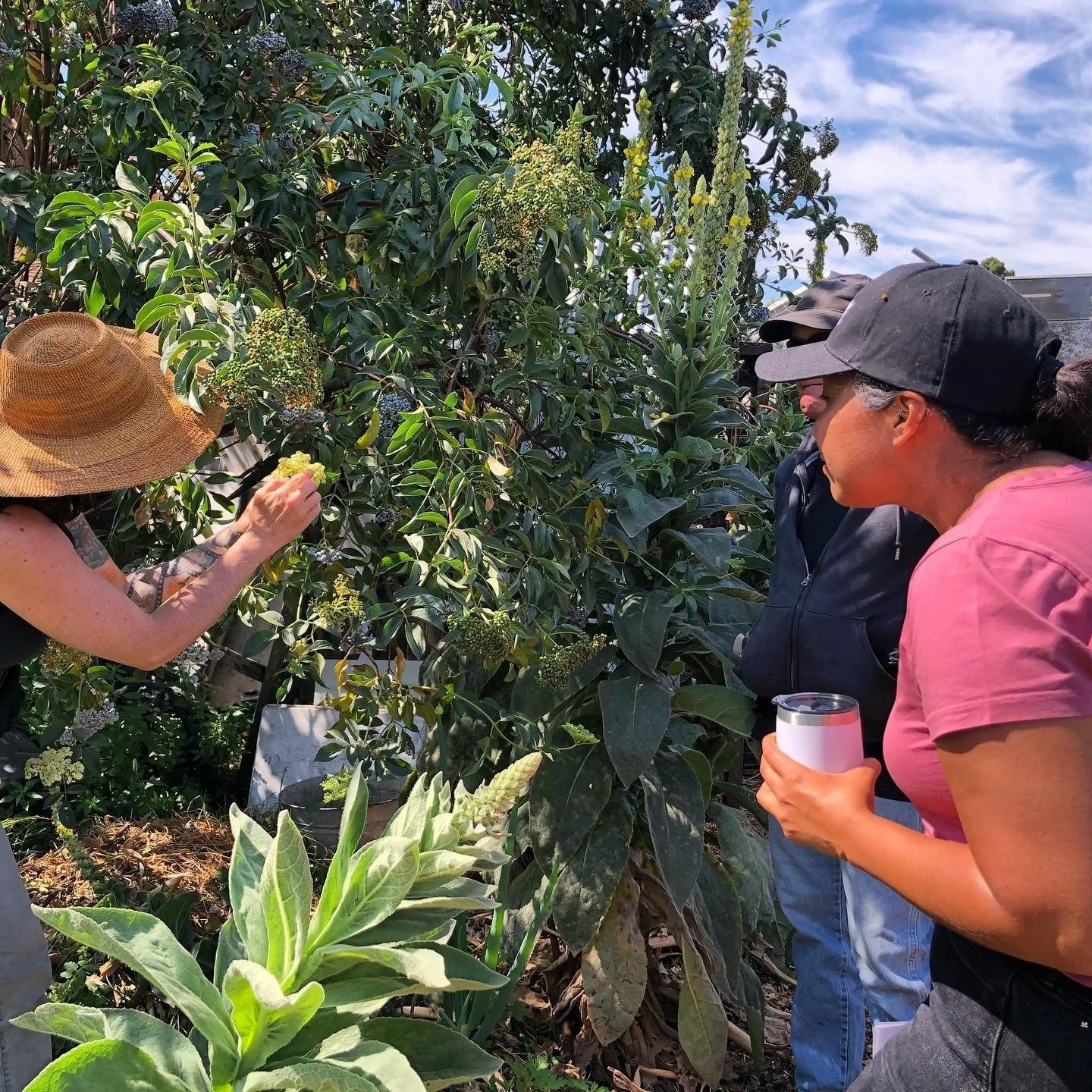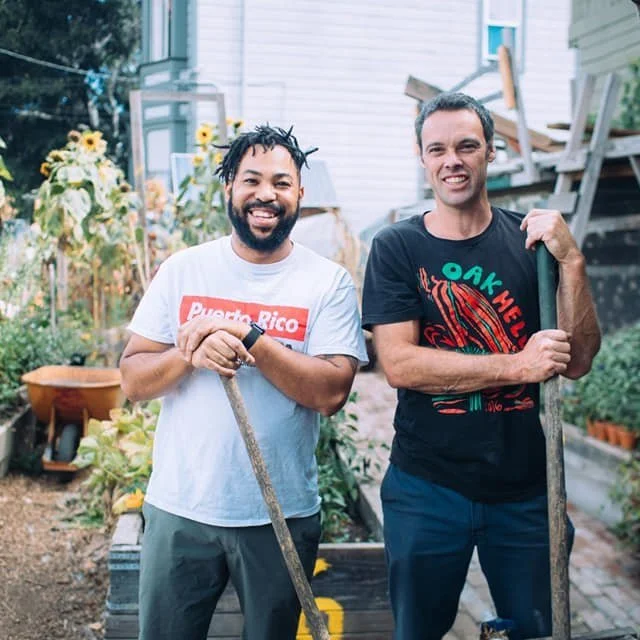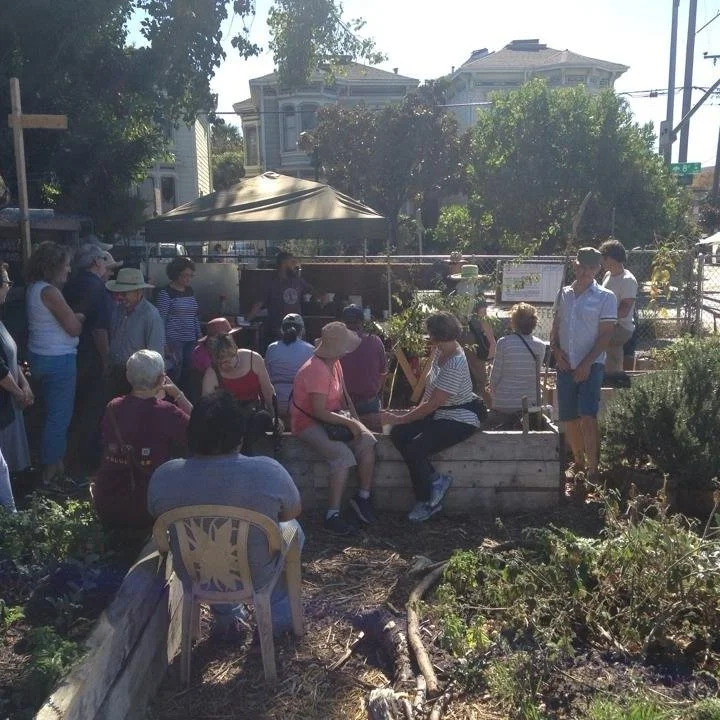Local Food Systems
-Since 2014, NTO staff have been operating a 13,000 sq ft urban farm, Bottoms Up Community Garden in the Lower Bottoms of West Oakland, an historic food desert. Our urban farm produces over a ton of food a year and runs two weekly food banks, feeding over 100 neighbors in need. We have experienced first hand how growing food and raising community livestock brings people together and fosters an environment where neighbors become invested in shared spaces focused on life generation.
Accessible Nutrition
-Too many Oakland neighborhoods lack accessible and affordable healthy food options.
-This is associated with a host of negative health outcomes, including diabetes, heart disease, and cancer.
-Local community gardens are shown to improve the diets of those who participate, as increased consumption of healthy fruits and vegetables replaces the ultra processed foods that cause so many problems for the health of Oakland residents.
-Vitamins and anti-oxidants in many types of produce may be 100 percent higher in fresh picked, local produce versus store bought.
-Proper nutrition is linked to childhood brain development. With only 18.6% of Black students and 23.8% of Hispanic students in OUSD reading at a grade level, it is vital that our communities provide families with nutritional resources and education.
Public Safety
-Studies have shown community gardens and the greening of blighted, vacant spaces are associated with reduced crime and gun violence.
-In a landmark study performed by the University of Pennsylvania, reported that “Participants living near treated vacant lots reported significantly reduced perceptions of crime (−36.8%, P < 0.05), vandalism (−39.3%, P < 0.05), and safety concerns when going outside their homes (−57.8%, P < 0.05), as well as significantly increased use of outside spaces for relaxing and socializing (75.7%, P < 0.01). Significant reductions in crime overall (−13.3%, P < 0.01), gun violence (−29.1%, P < 0.001), burglary (−21.9%, P < 0.001), and nuisances (−30.3%, P < 0.05) were also found after the treatment of vacant lots in neighborhoods below the poverty line…Restoration of this land can be an effective and scalable infrastructure intervention for gun violence, crime, and fear in urban neighborhoods.”
Community Resilience
-Urban farms empower communities that may be facing severe hardships to take control of their local environment and diet - two vital components of life improvement. These shared third spaces can be used as sources for meaningful, gainful employment.
-In periods of economic constraints, access to nutrient dense produce becomes even more limited for those without means. NTO is working to rejuvenate blighted, vacant lots to build unity and preparedness in our neighborhoods.
-Urban agriculture helps to reduce our increasing physical distance to nature and its processes, which leads to a lack of understanding of human dependence on healthy ecosystems.
-Urban farms also reduce our environmental footprint. NTO works with local restaurants, grocery stores and neighbors, utilizing donated food unfit for human consumption to feed our community livestock and fertilize our produce.





